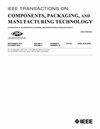A Dual-Tree Complex Wavelet Transform Simulation Model for Improved Noise Modeling and Prediction of Real-Time Stencil-Printing Process
IF 2.3
3区 工程技术
Q2 ENGINEERING, ELECTRICAL & ELECTRONIC
IEEE Transactions on Components, Packaging and Manufacturing Technology
Pub Date : 2024-08-23
DOI:10.1109/TCPMT.2024.3449047
引用次数: 0
Abstract
This article presents a dynamic simulation model for the stencil-printing process (SPP) in surface mount technology (SMT) assembly lines, focusing on accurately replicating the real-time stencil printing while allowing adjustments to printer settings. The model offers a time and cost-effective alternative to the experiments and a reliable testing environment for researchers and technologists investigating advanced algorithms and strategic methodologies in SMT printing. SPP is influenced by various controllable factors, such as printer parameters. However, an additional challenge arises from uncontrollable environmental noise that affects the printing quality, leading to uneven solder paste application and machine precision that brings randomness to the results. Recognizing the need to mitigate the effects of this environmental noise and enhance the accuracy of the simulator, the proposed simulation model incorporates a dual-tree complex wavelet transform (DTCWT) algorithm. DTCWT used in this model addresses the challenge of environmental noise affecting the printing quality, showcasing an enhanced capability in noise reduction and signal clarity. The noise from the SPP data is modeled and extracted from the DTCWT model and introduced into the simulation model to improve the prediction accuracy. The simulation model demonstrated an improvement of 36% in Volume AVG and 62% in Volume STD accuracy on root-mean-squared error (RMSE), marking a significant advancement over the statistical simulator.用于改进实时模板印刷过程的噪声建模和预测的双树复小波变换仿真模型
本文介绍了表面贴装技术(SMT)装配线钢网印刷工艺(SPP)的动态仿真模型,重点是精确复制实时钢网印刷,同时允许调整印刷机设置。该模型为研究人员和技术人员研究 SMT 印刷中的先进算法和策略方法提供了一个省时、经济的实验替代方案和可靠的测试环境。SPP 受打印机参数等各种可控因素的影响。然而,不可控的环境噪声会影响印刷质量,导致焊膏涂抹不均匀,机器精度也会给结果带来随机性,从而带来额外的挑战。考虑到需要减轻这种环境噪声的影响并提高模拟器的精度,所提出的模拟模型采用了双树复小波变换(DTCWT)算法。该模型中使用的 DTCWT 解决了环境噪声影响印刷质量的难题,展示了更强的降噪能力和信号清晰度。DTCWT 模型对 SPP 数据中的噪声进行了建模和提取,并将其引入仿真模型,以提高预测精度。在均方根误差 (RMSE) 方面,模拟模型的体积平均值 (Volume AVG) 精度提高了 36%,体积标准差 (Volume STD) 精度提高了 62%,与统计模拟器相比取得了显著进步。
本文章由计算机程序翻译,如有差异,请以英文原文为准。
求助全文
约1分钟内获得全文
求助全文
来源期刊

IEEE Transactions on Components, Packaging and Manufacturing Technology
ENGINEERING, MANUFACTURING-ENGINEERING, ELECTRICAL & ELECTRONIC
CiteScore
4.70
自引率
13.60%
发文量
203
审稿时长
3 months
期刊介绍:
IEEE Transactions on Components, Packaging, and Manufacturing Technology publishes research and application articles on modeling, design, building blocks, technical infrastructure, and analysis underpinning electronic, photonic and MEMS packaging, in addition to new developments in passive components, electrical contacts and connectors, thermal management, and device reliability; as well as the manufacture of electronics parts and assemblies, with broad coverage of design, factory modeling, assembly methods, quality, product robustness, and design-for-environment.
 求助内容:
求助内容: 应助结果提醒方式:
应助结果提醒方式:


